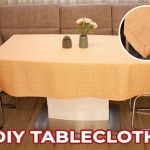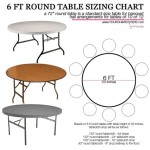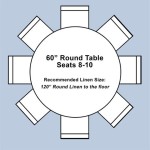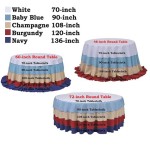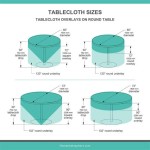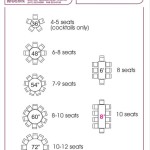How To Make A Simple Macrame Table Runner
Macrame, the art of knotting cord to create decorative textiles, offers a beautiful way to personalize a dining space. A macrame table runner adds a touch of bohemian elegance and texture, easily complementing various décor styles. This guide provides a step-by-step process for crafting a simple yet stylish macrame table runner, suitable for beginners.
Gathering Materials
Before embarking on this creative journey, assembling the necessary materials is crucial. The project requires macrame cord, preferably a 3mm or 4mm twisted cotton cord for a beginner-friendly experience. The quantity depends on the desired length and width of the runner. A measuring tape or ruler helps determine the required cord length accurately. A wooden dowel, slightly longer than the desired runner width, acts as the anchor for the knots. Scissors are essential for cutting the cord, and masking tape can secure the dowel to a stable work surface.
Preparing the Cords
Measuring and cutting the cords is the foundational step. Decide on the desired length of the table runner, keeping in mind that the folded cord lengths will comprise the finished length. Double this desired length, adding a few extra inches for knotting and trimming. Cut the required number of cords, ensuring they are all of equal length. The number of cords determines the width of the runner – more cords equate to a wider runner.
Attaching the Cords to the Dowel
With the cords cut and ready, the next step is securing them to the dowel. Fold each cord in half and position the looped end over the dowel. Bring the loose ends of the cord through the loop and pull gently, creating a lark's head knot. Repeat this process for each cord, spacing them evenly across the dowel. Secure the dowel to your work surface using masking tape, facilitating a stable knotting process.
Creating the Square Knot Pattern
The square knot is a fundamental macrame knot and forms the basis of this simple table runner. Select four adjacent cords. Label these cords 1 through 4 from left to right. Take cord 1 and pass it over cords 2 and 3, then under cord 4. Take cord 4 and pass it under cords 2 and 3, then up through the loop created by cord 1. Gently pull both cords 1 and 4 to tighten the knot. This forms half of the square knot.
To complete the square knot, take cord 4 and pass it over cords 2 and 3, then under cord 1. Take cord 1 and pass it under cords 2 and 3, then up through the loop created by cord 4. Pull both cords to tighten the knot. This completes the square knot. Repeat this process along the row, creating a series of square knots.
Building the Runner Pattern
Continue creating rows of square knots, maintaining consistent spacing. The pattern can be as simple or complex as desired. A basic pattern involves repeating square knots row after row. For a more visually interesting pattern, consider offsetting the square knots in each row. This involves using different groups of four cords for each row, creating a diagonal or alternating pattern.
Finishing the Runner
Once the desired length of the runner has been achieved, it's time to finish the piece. Trim the excess cord at the bottom, ensuring all cords are of equal length. Consider adding fringe for a decorative touch. To create fringe, simply unravel the bottom portion of each cord, creating a textured edge. Alternatively, beads can be added to the ends of the cords for a more embellished look.
Alternative Knots and Patterns
While the square knot provides a classic and elegant pattern, exploring other macrame knots can add variety and complexity to the table runner. The half hitch knot, the double half hitch knot, and the Josephine knot are excellent options for incorporating different textures and visual elements. Combining various knots in a single project allows for unique and intricate designs.
Experimenting with different patterns further enhances the design. Alternating square knots with rows of half hitch knots create a textured and layered effect. Incorporating diagonal patterns or creating sections with varying knot densities add visual interest and dimension to the runner.

Macrame Table Runner Tutorial Easy Diy Useful Items For Home Decor Him

How To Make Macramé Table Runner Using 3 Simple Knots Macrame Tutorial

Make A Macrame Table Runner Tutorial The Diy Mommy

Beginner Macrame Fringed Table Runner Diy Kimenink

Quick And Easy Macrame Table Runner Diy

Diy Macrame Fringe Table Runner Driven By Decor

How To Make A Macrame Table Runner Anthropologie Inspired The Diy Mommy

Beginner Macrame Fringed Table Runner Diy Kimenink

A Very Simple Macrame Table Runner The First I Ve Ever Done Tapeçarias De Macramé Tutorial Brincos Ideias Para Artesanato

Diy Easy Macrame Table Mat Or Runner Step By Tutorial Home Decor
Related Posts

